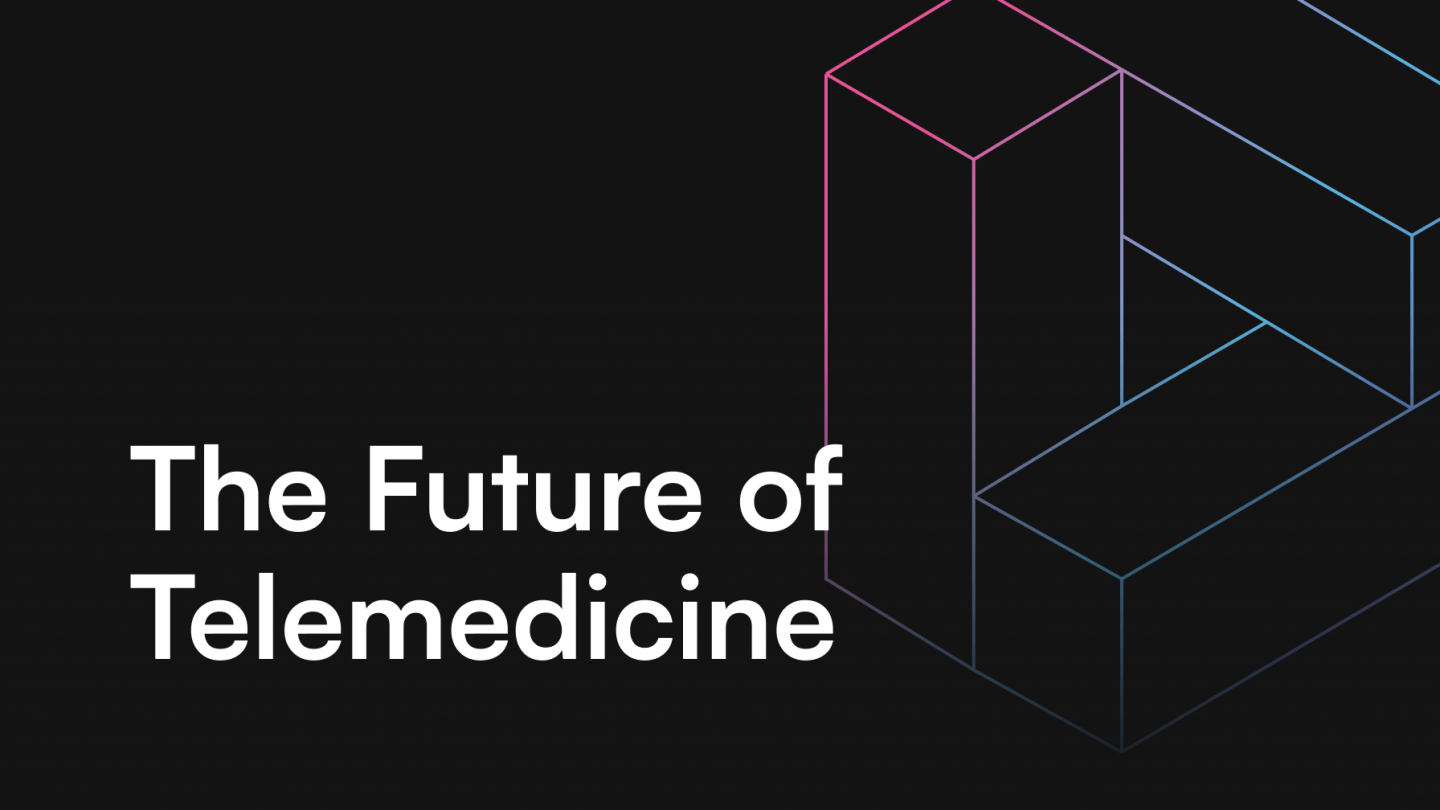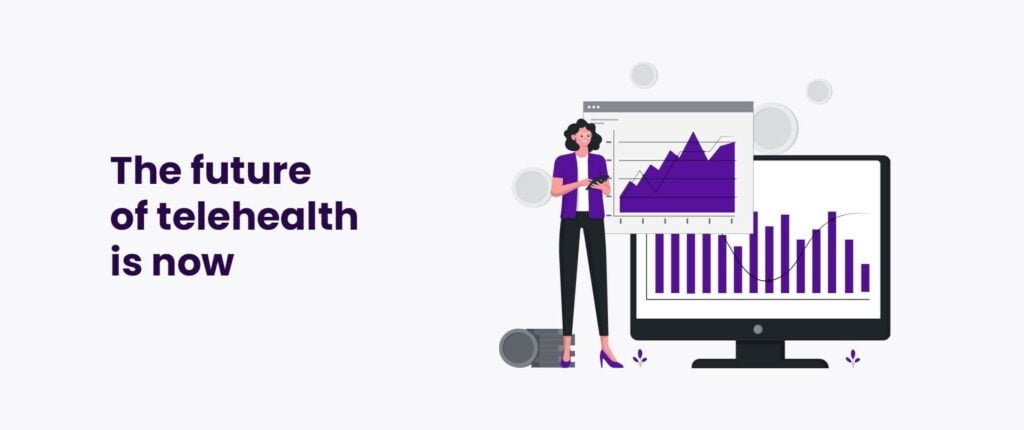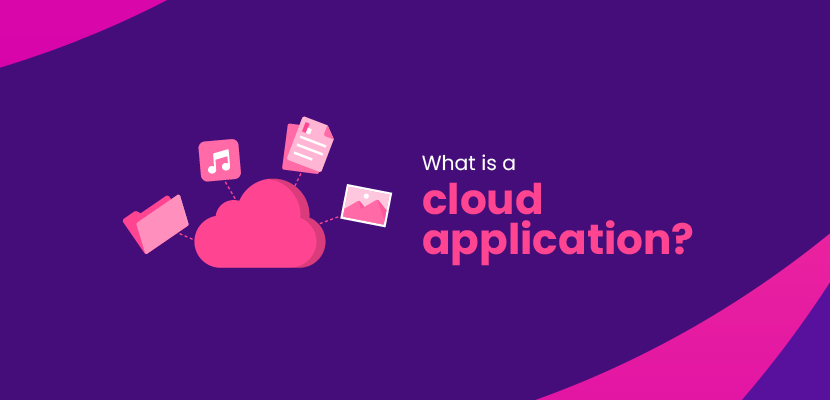The Future of Telemedicine

Bartosz Pieślak

Alexa Trachim

There is no doubt that a rapid expansion of telemedicine is currently taking place. Technology continues to evolve, revolutionizing our lives in every possible way. E-health services have become a part of our reality, especially since the COVID-19 pandemic outbreak.
Table of contents
Like any business, telemedicine focuses on continually improving customer care and experience. All innovations that become standard for remote healthcare in the future will have a common goal – to provide seamless, comprehensive medical services to patients, no matter their location and material situation. Telemedicine will be challenging for the traditional state-reimbursed healthcare system, which, in many countries, has suffered from low quality and a lack of efficiency in time and resources in recent years. Telemedicine is a realistic solution to long waiting lines, uncomfortable visits, delayed responses from emergency services and expensive treatments. Not to mention the care of chronically ill patients and the possibility to monitor risk-prone people on an ongoing basis. Thanks to telemedicine, their lives can significantly be improved and, in some cases, saved – before it’s too late.
Our ebook, the future of telemedicine, takes a closer look at these changes in the industry as well as the significant potential in software dedicated to digital healthcare.

What is telemedicine?
It’s vital to establish a clear outline, defining exactly what telemedicine is.
Telemedicine is a relatively new concept that owes its rise in popularity to advances in technology and the market’s changing needs. The growth in demand for telehealth solutions is primarily thanks to consumers’ changing habits. However, its overall rise to popularity can be attributed to the COVID-19 pandemic as, to prevent the unnecessary spread of the virus, doctors were forced to find ways of diagnosing patients without physical contact; the perfect use scenario for telemedicine.
The first experiments with remote healthcare activities were conducted in the 1920s with reports of doctors diagnosing patients by using radio technology. Today, the same concept of leveraging the latest technology to help those in need is being utilized by medical specialists and budding entrepreneurs alike. These individuals have quickly recognized an opportunity to grow and expand the field of telemedicine. The ability to send medical records and provide consultations in real-time, no matter how much distance separates the doctor and the patient, is not only efficient but has seen the birth of a new side of the medical sector. Telemedicine has also made it possible to alleviate healthcare shortages, reduced the importance of geographic location, and react even quicker to medical emergencies.
Today, this area of the healthcare industry is rapidly evolving. Thanks to the widespread adaptation of technology in the medical sector, it has become more affordable and increasingly more versatile. It is not only about serving people in remote areas with limited access to healthcare specialists, but the convenience and ease of using telehealth platforms will see over a billion online medical consults in 2020 alone.
Learn more about why telemedicine is the future of the healthcare industry in our ebook: The Future of E-Health. Your Guide to MedTech Development. We discuss the basics like current trends, market leaders and the future of this field. Additionally, you will find detailed information about business models, system types and budget requirements, as well as UX and UI design in telemedicine software products. You’ll also see a summary of HIPAA compliance and readymade solutions used in remote medical care.
Current telemedicine trends
If you are wondering what telemedicine’s future is, the following trends can serve as a guide. Telehealth services are growing – there is no doubt about that, providing better access to virtual care and simultaneously driving both awareness and the innovation it brings. Clinical providers can boost the quality of their service via telemedicine, allowing health systems to continuously evolve and adapt to our world’s changing conditions.
With the COVID-19 pandemic, we found out that it’s not always necessary to go to the hospital – to restrict the spread of the virus, we were taught that clinical care is reserved for patients with severe cases. A common cold is not a reason to visit the emergency room and occupy vital resources. Telehealth services became one of the most convenient and safe ways to get new prescriptions, speak to the doctor about skin problems, undertake therapy and a plethora of other services.
Here, we will present the most promising telehealth trends that will revolutionize every clinical facility worldwide.
The numbers don’t lie
More than 45% of the global population owns a smartphone – in 2020, the market is predicted to grow by 9.3%, increasing to 3.5 billion users. These small pocket-computers have changed the way we do many things; from banking, through ordering food to booking appointments – we can do almost everything via smartphone. Telemedicine is now taking advantage of this trend on a large scale. The future of telehealth depends on the growing usage of smartphones as healthcare providers primarily invest in mobile applications for virtual services. It’s comfortable and convenient, and using such devices significantly cuts the time needed to connect with a clinical specialist.
Younger generations expect services to become convenient and available via mobile devices, and healthcare is no exception. Who knows, while in 2020 telehealth is an entirely new concept, in 10 years, we all might visit our physicians online. If you observe the explosion in digital banking – in 2007, only 30% of UK adults used it, and in 2019, this had increased to 73%, we can predict a similar growth in telehealth services. This increase shows that new technological solutions become mainstream as the years pass by and adoption becomes widespread within the general public.
This growth is primarily driven by one of the most critical factors – cost savings in all healthcare areas. Research from 2019 shows that telemedicine can cut costs from $19 to $120 per patient per visit. If hospital visits were replaced with virtual services, the savings increase significantly, with the medical facility saving from $309 to $1500. With telehealth services that allow people to schedule on-demand appointments for $49, they could save hundreds of dollars while improving the convenience – an advantage for both sides.
Virtual healthcare may save time, money and other resources that would be spent, whether necessary or not. That’s why the future of telehealth is so overwhelmingly promising.
Specializations and more possibilities
Until recently, most patients associated telehealth services with GP consultations and other minor medical consultations. But with technological growth, the ability to deliver a broader range of services has become a reality. We have access to advanced clinical solutions that don’t require us to visit a hospital to be diagnosed. As well as saving time, healthcare becomes more comfortable for all – especially for patients that may have disabilities or other difficulties which may limit their access; many things become more straightforward and more effortless with remote access.
Teleradiology, for example, can send x-rays and other medical records between healthcare facilities, better-utilizing resources, so patients don’t have to wait as long for their results. Telepsychiatry offers access to remote therapies for patients who can’t leave their homes due to a pandemic or suffer from a shortage of available doctors or appropriate transport. In teledermatology, patients can send pictures of their skin problems to their physicians. Some devices even allow a doctor to take 3D images of moles or rashes, enabling them to monitor anomalies. Every digital telehealth service that specializes in various clinical areas makes the lives of patients and doctors easier.
Oncology is particularly interesting, as it allows all hospitals to access clinical specialists in many types of cancer and meet the needs of patients instead of referring them to other clinical facilities. Telehealth makes healthcare more accessible and universal, despite the location of the patient. And in the future, this potential may grow and expand, eliminating geographical constraints and allowing better access to specialized knowledge and services.
Telemedicine in hospitals
When patients are looking for convenience and hospitals are overloaded with work and frequently under-resourced, telehealth can be a literal lifesaver. Remote tools help doctors and other clinical workers plan their schedules, react to emergencies efficiently and stay safe during situations like the coronavirus pandemic. The list of benefits is endless – helping with more accurate diagnoses, machines analyzing data, monitoring patients with chronic diseases and so on. Every hospital will benefit significantly from introducing telehealth into its processes.
Emergency room visits are particularly problematic. The number of visits is growing every year, but hospitals with ERs are decreasing due to a lack of staff and resources. Virtual appointments are already having a positive influence on the number of ER visits. Research shows that in some hospitals, availability has caused a 25% decrease in ER visits, while revenue has grown by 20%. That’s significant, especially when it comes to cases that don’t require an ER visit, providing substantial savings while allowing a higher level of care to those who need ER attendance. This is also reflected in ICU cases (intensive care units), where the number of patients could also be reduced to just those who need a face-to-face consult. The rest could seek help via telemedicine.
Taking advantage of consumer technologies
There are many opportunities in mobile communication platforms, wearable devices and IoT (internet of things) for telemedicine. They can have sensors that monitor overall health symptoms, and their ability to continuously collect and analyze data is priceless. Using this information, healthcare providers will be able to offer their services on-demand in an almost real-time manner. Utilizing all of this hardware and software encourages users to consistently control their own health and take better care of themselves, which can be vital for early intervention.
A perfect example here is connecting IoT home devices with smart speakers like Google, Amazon Echo or Siri from Apple. They can become personal health assistants by processing and monitoring relevant information. Of course, there has to be legal regulation for data protection and also, there is a need to create new standards that will be directions for patients to use such tools. Despite this, there is no doubt that this telemedicine branch will become more advanced, comprehensive and convenient in the future.
Better customer experience – everywhere
There are many examples of more convenient and accessible remote healthcare solutions. For instance, we can have health stations that provide private, secure spots in easily accessible locations (schools or offices) with medical devices and the possibility to contact a physician. Telemedicine kits offer a set of tools that are synchronized with mobile or web applications to perform examinations. Rural schools can obtain telemedicine healthcare to receive similar services as their urban friends, regardless of their location.
What matters here is that telemedicine can be applied in almost any situation that traditional medical services wouldn’t be able to handle. Moreover, it can provide solutions to the modern healthcare industry’s problems and replace some ineffective or unnecessary services – all of that with simple, easy-to-use wearables, intuitive applications, and powerful technology behind them.
The future of telehealth will not only rely on shorter waiting time, better access and fast internet connections; there will still be a strong focus on the human element. Providers need to bring the service with excellent customer care to give patients the confidence and comfort that they are taken care of, even if they are miles away.
Artificial intelligence and computer learning algorithms – the future?
One of the most essential innovations is the growing use of AI, machine learning, deep learning and other computing algorithms in telehealth. They are truly universal and can be applied in many medical procedures, from administrative purposes, data analysis and enhancing processes. Aside from using them in computers present in healthcare facilities, they can also be installed in medical devices. The primary purpose of using artificial intelligence is to simplify the decision-making process and provide patients with better service and more accurate results.
There are many examples of AI and other algorithms that are already used in telemedicine. They are continually developed to bring us an even more innovative future where healthcare is cost-efficient for both patients and institutions, offers comprehensive services, is accessible and provides excellent results. Let’s see how artificial intelligence is evolving within telemedicine.
AI is commonly used in patient monitoring. Besides wearables and home devices, it can become something more literal thanks to robots that can “walk” through hospital hallways and drop by the patients’ rooms to check in with them. Some hospitals have already introduced such technology. Controlled by special software with a machine learning algorithm, the robot can remember how the hospital corridors are designed and move through them freely. They observe patients with pre-installed cameras, monitor critical diagnostic information, and have screens for doctor-patient communication. It’s not only convenient by saving the physicians’ time, but it can also be life-saving in times of a pandemic.
Another instance where AI has become useful is with rehabilitation equipment. Thanks to algorithms that don’t require a doctor or other staff member’s presence, these systems can collect data about usage and performance, with the hardware connected to a mobile app or web platform where they can send information directly.
There are bold plans regarding big data and neural networks in telemedicine. They could be used in systems that would store all medical records – becoming one universal database for patients worldwide. As telemedicine doesn’t need borders, having a unified platform available to doctors with up-to-date information about patients could be a factor in simplifying the services offered within remote healthcare, and improving coverage throughout the world.
For medics with inadequate internet coverage and a lack of infrastructure that still want to take advantage of patient monitoring and telemedicine services, cloud computing could be the answer. Creating remote server systems would allow medical facilities to store and manage collected data. This type of system architecture is dedicated to providing similar access to medical records for all doctors and standardizing healthcare quality in all locations without requiring expensive IT investments at all levels.
Health assistants are a trend that is becoming more and more popular. Patients want to monitor their own symptoms like blood pressure, heart rate or oxygen saturation. They use mobile applications, web platforms and their devices (smartphones, fitness bands, smartwatches) to do so. By doing this, they can perform an initial evaluation of their symptoms before they even contact their physician – AI can improve this even further. The algorithms can be programmed to look for patterns and anomalies, inform users about them and even contact hospitals automatically in the event of an emergency. Self-care is significant for many of society’s members, and modern software can make it easier for them, while further reducing the burden on physical locations.
We should also mention that artificial intelligence algorithms can be used in research and academic work. Looking for new cures, recognizing unknown illnesses, and international collaboration between health specialists could bring spectacular medicine development results. Data that these systems collect can be analyzed, and computers would help them draw conclusions and write predictions for the future. Maybe they would help cure all types of cancer or detect them so early that they would be non-fatal. The utilization of AI in medical research is revolutionary and likely to achieve great things.
Of course, we need to remember that telemedicine has its own set of challenges, like the high cost of implementation, lack of infrastructure, and specialized training. Not all medical care facilities have equal access to internet bandwidth, and it is currently quite challenging to change it. Also, every place that wants to use artificial intelligence, and other algorithms, needs to take the proper security measures to protect patient data, meet specific regulations and implement the right development plan. Regardless, AI is already present in telemedicine (and healthcare in general), and it is sure to become one of its integral parts, and a force for rapid advancement.
We asked our experts – what is the future of telemedicine?
We’ve asked several established telehealth specialists to express their thoughts on the future of telemedicine. We spoke with clinical providers, health specialists and software development experts and presented their findings in our ebook, where they share their expert insights on telehealth’s future. These specialists are also our clients, for whom we have created digital health products and the software services they require to take advantage of the telemedicine industry.
So what are their opinions? Let’s find out!
Home Doctor, a successful telehealth provider that recently gained almost 4 million euros of Series A funding, highlights the fact that it all may have started with googling illnesses and looking for care on websites and portals. Telehealth is much more advanced – we use it via our smartphones with mobile apps that utilize AI to provide even better results.
“When we think about the future, there is one question that arises: how to connect all telemedicine solutions into one seamless experience? COVID-19 was definitely a big catalyst in improving the telemedicine progress. Now we have plenty of choices – phones, video calls, wearables and services like our Symptom Checker, that use AI for medical recommendations. There are two main trends in telemedicine companies – startups that offer niche services and big enterprises that integrate many different offers into single comprehensive healthcare plans. And we think that this second tendency will grow to provide a seamless experience.” – Home Doctor
Sidly, a leading company among providers when it comes to health wearables, is betting on it with their business model. Such devices promote taking care of oneself and support patients in monitoring their well-being.
“We predict that within 5 years, all telemedicine services will be supported by wearables. Three areas will expand – first is monitoring health parameters like EKG or blood pressure control. Then we have telecare – the ability to take care of people remotely. And the third niche will be telemedicine in hospitals that helps to optimize work and keep safety measures in terms of crisis, such as pandemics. Coronavirus showcased the potential of this industry. Competition is constantly growing, especially when it comes to innovative startups that are founded and often quickly disappear. But they leave their ideas that are adopted and improved by bigger players.” – Sidly
“Adjusting our product to the reality of hospitals and adding voice communication to the system gave them a chance to reduce face-to-face contact between patients and staff, which is crucial during the pandemic. It also was a great way to ease the stress and burden on the personnel.” – Sidly
MindLeap – a startup dedicated to self-care, is confident that telehealth will grow and develop in many different ways, for the betterment of people that are seeking to monitor and improve their health on an ongoing basis.
“We hear words like ‘TeleHealth’, ‘TeleMed’ and ‘eHealth’ and they are all the same to me, but MindLeap is definitely a digital health platform. Telemedicine is here to stay, and to continue its growth, it is important for new platforms to come out. This will keep things competitive and push companies to innovate more and more until it becomes the norm.” – MindLeap
And there’s also Life Whisperer, a brand that uses AI for clinical purposes – improving chances of conceiving. In the ebook, you will find the whole interview with Dr. Don Perugini – a co-founder of this telehealth company. Here, he shares how Life Whisperer accelerates the effectiveness of traditional therapies.
We believe that AI will be more effective to support the clinician (hand in hand) rather than a replacement. Life Whisperer is intended as decision support – to provide an additional layer of information to support their decision. The final decision should be up to the clinician.
The best way to convince patients and doctors is via validation studies showing that the technology works across different clinics and patients globally. For Life Whisperer, we showed that the AI performed 25% better than clinicians (embryologists) in an international study involving 12 clinics and 4 countries. Hence, if the clinician relies on that information, together with their expertise and other patient information used to make a decision, then you can be confident that it will likely validate the decision made. Having peer-reviewed publications also helps.
Shareholders and investors want to know not only that the technology works but that clinicians and patients will trust and use the technology. The problem you are solving is significant enough that they will be willing to pay for it. – Life Whisperer
Finally, Bartosz Pieślak – the co-founder of itCraft and telehealth expert, sums up the whole trend. He has been working with providers from all around the world for years. He always proposes the best solutions for our clients from the health and self-care industries. You can even book consultations with Bartek – so if you are a telehealth company that is looking for business support, do not hesitate to contact him.
There’s definitely a bright future for telemedicine. Constantly growing demand and – what’s probably more important – the lesson we learned after the pandemic will make e-health businesses invest in growth and further development. Now we know that unexpected situations can arise, and healthcare is one of society’s most significant pillars. Being prepared for every eventuality is crucial in the modern world, and telehealth software can be the perfect solution in achieving this. – itCraft

The future of telehealth is now
As you can see, there are many trends that shape the current state of telehealth. The providers look for better innovations and advanced solutions that support patients’ health, self-care, and overall well-being. We are sure that this sector will expand and offer even more exciting tools to connect clinical specialists and patients.
This article was written based on our telehealth ebook – download it to find out more about system types, business models, UX and UI design and legal regulations for digital health companies. It’s a comprehensive guide for all aspiring telehealth brands that want to create such digital solutions. You will find case studies, interviews with providers and useful examples inside.
Also, if you want to talk to an e-health expert in terms of software development, book consultations, we are offering for all clients who wish to collaborate with us to create apps or other online products. We will gladly help you!
Do not hesitate to contact us if you have any questions or are looking for a reliable business partner for your telehealth project.





